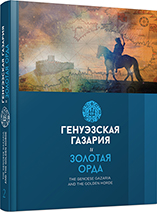
We kindly inform you that, as long as the subject affiliation of our 300.000+ articles is in progress, you might get unsufficient or no results on your third level or second level search. In this case, please broaden your search criteria.


















The current body of knowledge is presented on the history of the Middle Yenisei population in the Late Middle Ages, including a compilation of written sources on the history of Southern Siberia of the Mongol time. The Kyrgyz Khaganate, one of the earliest state formations on the territory of Russia, was the target of the first major conquest of the Mongol army. Later on, the territory and population of the Khaganate were split among different states emerging on the ruins of the Mongol Empire. In this regard, this work combines and analyzes heterogeneous sources for the Late Middle Ages of the Khakassia-Minusinsk Hollow and the adjacent territories, including archaeological ones. The authors describe characteristic topography and planning of burial grounds with cremations and inhumations. The grave goods, on the one hand, are as versatile as the complex of artefacts common for all ethnic groups exposed to the Mongol influence, and on the other hand, they have a strong technological and aesthetic identity of predominantly metal products, which are inherent for the peoples of the Southern Siberia.
More...
Archaeological and epigraphic sources allow to reveal external (state) and internal (administrative) borders between countries of the South Siberian region in the 6th—14th centuries. So, funerary sites with some Turkic sculptures, well distinguishable from similar objects of other Turkic people, seem to be an indicator of external borders of the First and Second East Turkic khaganates. Where they are absent, there was no Turkic domination. The northern border of the Uigur khaganate is noted by pise-walled fortresses and a 230 km long wall that connects them. Old Khakassia stone fortresses protecting passes in Western Sayan Mountains also show that borders of this country passed across ridges. But with expansion of the country from the second half of 9th century, the rivers became borders. It is evidenced by placement of military cemeteries of the ancient Khakass found on only the right coast of the Irtysh River. Two Mongol towns which had typical buildings for the Mongols, appear to be centers of two administrative districts. The old Khakassia family and personal heraldry is familiar to a series 9—10th centuries connected with marks in epitaphs and rocks, specified hereditary land use, outlining borders of possessions in Tuva and in Khakassia.
More...
In the middle of the 20th century, Soviet archaeologist L. Kyzlasov identified 6 towns in the territory of Tuva and dated them by Mongol time. Most of them are located in Tandy district. This article is empirically based on L. Kyzlasov’s studies conducted in the 50—60s of the 20th century, materials of the archaeological field surveys carried out by the author in cooperation with the Institute for Mongol, Buddhist and Tibetan Studies of the Siberian Branch of the Russian Academy of Science (2011), as well as independently (2013, 2016, 2017). Visual surveys allowed to fix an unsatisfactory condition of ancient settlements exposed to destructive human activity. Some sites (Ertine-Bulak, the Elegest town) seem to be totally destroyed. Insufficient data on Oymak town in Ulug-Khem district did not allow its repeated localization. The best preserved town — Mezhegey — requires more attention and further research.
More...